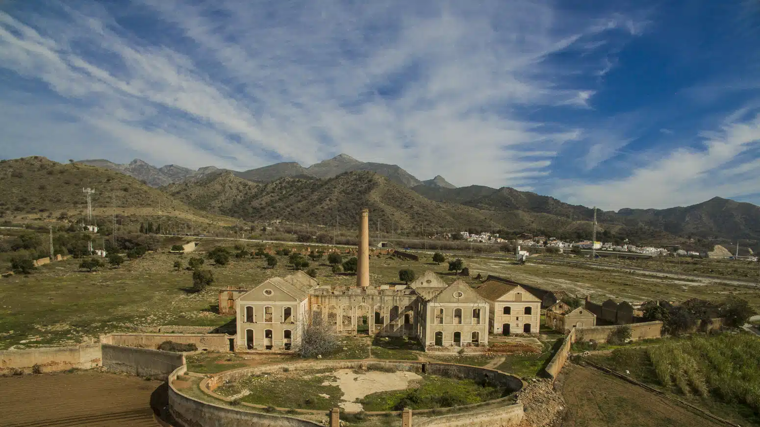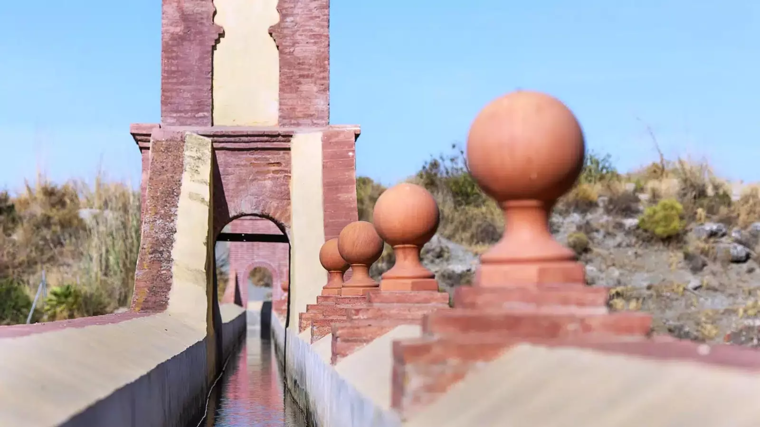The 'Segovia aqueduct' in Andalusia: it's twice as long and still works.

Hidden among the ravines and orchards of the Axarquía region of Malaga lies an aqueduct that surprises anyone who visits it. Located between Nerja and Maro, this red brick Mudejar bridge is a 19th-century gem that is still in operation. This is the Águila Aqueduct , also known as the Eagle Bridge. Located just 50 kilometers from Málaga and 90 from Granada, it is a great option for those looking to discover a place steeped in history in a unique setting.
Designed by master builder Francisco Cantarero Martín, its structure stands out for its four levels and 36 superimposed brick arches. It is 52 meters high and approximately 100 meters long. The interior of the upper channel measures 65 cm and transports up to 100 liters per second.
Built in 1880, it carried water from Nerja to the Maro sugar factory through two canals, one of which is hidden. Its north face was beautified because it was visible from the old road that crossed the ravine toward Almuñécar. However, the N-340 currently runs on its other side, where parking has been created to admire the aqueduct.
Its Mudejar style is characteristic: blind horseshoe arches, terracotta, ornamental friezes, and a central temple with a weather vane in the shape of a double-headed eagle. Hence its name. It also features an inscription in the center, "Pure and Clean Conception," although it is now somewhat worn.
Declared a Site of Cultural Interest (BIC) by the Andalusian Government, it was restored between 2010 and 2012 , when it recovered its original polychromy and the damage it suffered during the Civil War was repaired.
At the end of the 19th century, the San Joaquín Sugar Factory was built. Founded in 1879 by Joaquín Pérez del Pulgar as part of the Las Mercedes Agricultural Colony, its purpose was to clarify and refine sugarcane juice . The facility included warehouses, a distillery, and workers' housing, forming a self-sufficient community around a central plaza.
 Image of the Nerja sugar factory
Malaga Provincial Council
Image of the Nerja sugar factory
Malaga Provincial Council
Covering an area of approximately 37,000 square meters, it became an example of the industrial revolution on the "Sugar Coast," and the Águila Aqueduct channeled water from the Maro spring to the factory and the fields.
However, financial problems caused the property to pass to the Marquis of Tous in 1893, and in 1930 it was acquired by the Azucarera Larios, who continued production until the mid-20th century.
Remains of the main naves, pool, chimney, pond and workers' quarters are still preserved today.
Specifically, the aqueduct is located in the Coladilla Ravine , near kilometer 294.9 of the N-340. There is a roadside viewing point , a parking lot next to the road, and hiking and cycling trails that allow you to explore it from different angles.
By car : To arrive by car, take exit 295 of the A-7, towards Cuevas de Nerja/Maro.
 Image of the aqueduct
Malaga Provincial Council
Image of the aqueduct
Malaga Provincial Council
On foot or by bike : The Águila aqueduct is only about 3 kilometers from Nerja, so you can get there on foot or by bike. There are also circular routes that begin in Nerja or Maro and include viewpoints such as Tajo de los Bueyes and Cala Alberquillas. There are also medium-to-high difficulty routes, between 20 and 56 kilometers, which are best done in spring and autumn due to the summer heat and unstable winter weather.
Bus : You can also get to Nerja by bus and then walk or cycle from there.
But beyond the aqueduct, the area offers much more.
Nerja Caves (5 min): one of the most spectacular prehistoric sites in Spain, with stalactites, cave paintings, and a large event hall.
Stroll through Maro : charming old town, viewpoints, unspoiled coves such as Maro-Cerro Gordo, and seafood restaurants.
Nature trails : paths through the Tejeda-Almijara mountain range, with Mediterranean flora and breathtaking views.
Pre-industrial Sugar Museum in Motril and Ron Montero Winery (tastings): legacy of the Muslim sugar industry until the 19th century.
Nearby beaches : in addition to the coves of Maro, Nerja offers Burriana and Playazo, the balconies overlooking the Mediterranean.
Malaga cuisine : beach bars in Nerja, fried fish dishes, skewers, Axarquía wines.
As for timing, it's a great idea to go early in the morning or at dusk, when the light is warm and the crowds are fewer.
Additionally, it is recommended to wear comfortable shoes, water, sunscreen, and sportswear for long-distance routes.
The viewing platform allows you to take photos without having to walk far, but to see the canal and the base, it's recommended to explore on foot . There are no bars or other services in the surrounding area, but all amenities are available in Nerja and Maro.
ABC.es





